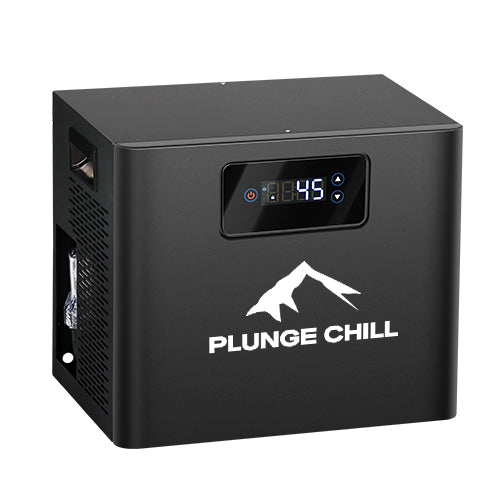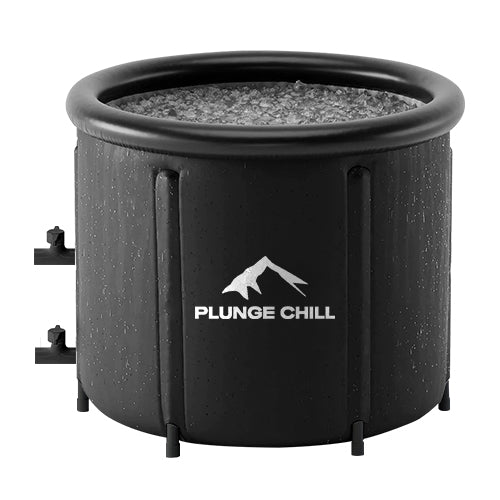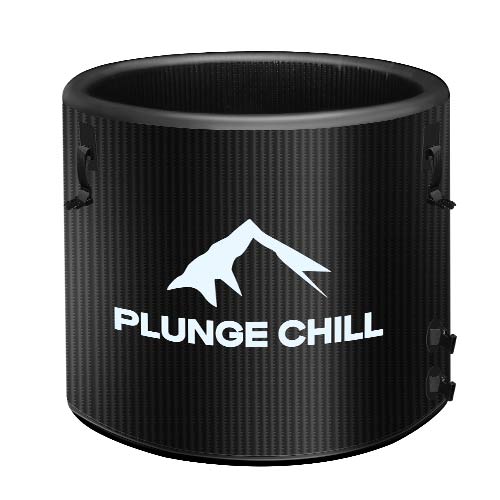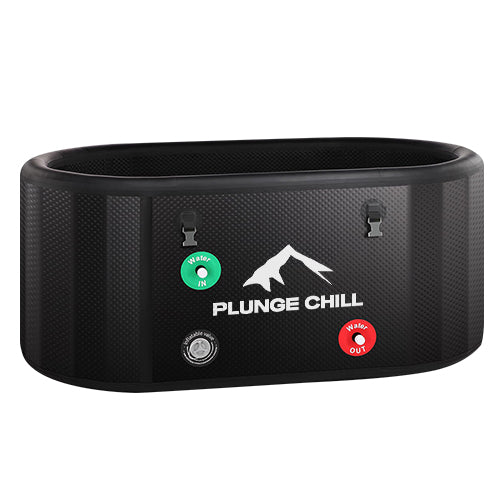From elite athletes to dedicated biohackers, the practice of cold plunging is taking the wellness world by storm. More than just a test of willpower, cold water immersion is a powerful tool for unlocking peak physical performance, accelerating recovery, and sharpening mental focus.
However, a critical question remains for many enthusiasts: When is the best time to take the plunge—before or after a workout?
The answer isn't black and white. The optimal timing depends entirely on your primary goal, whether it's immediate performance enhancement or long-term recovery and adaptation. This article provides a deep dive into the science, offering a clear guide to help you strategically integrate cold therapy into your training regimen for maximum results.
The Science Behind the Chill: How Cold Water Transforms Your Body
The moment you step into icy water, your body initiates a cascade of profound physiological responses. This is far more than just "feeling cold"—it's a complex biological symphony.
-
Immediate Physiological Response: Vasoconstriction and Blood Flow To preserve its core temperature, your body immediately constricts peripheral blood vessels (vasoconstriction), shunting blood away from your limbs and toward your vital organs. This process helps limit inflammatory responses in the muscles. When you exit the water, your vessels dilate, flooding your tissues with fresh, oxygen-rich blood—a "rebound effect" that helps flush out metabolic waste.
-
The Neurochemical Cascade: Forging Mood and Resilience The shock of the cold triggers a significant release of norepinephrine and dopamine from the brain. Norepinephrine sharpens your focus, alertness, and mood, while dopamine is the "feel-good" neurotransmitter that drives motivation. This hormonal cocktail is why people often report feeling energized, clear-headed, and euphoric after a cold plunge.
-
Immune System Regulation and Anti-Inflammatory Effects Regular cold exposure has been shown to modulate the immune system. It can help tame excessive inflammation by reducing pro-inflammatory cytokines, which are often elevated after intense exercise or due to chronic stress.
-
Mental and Psychological Benefits: Reshaping Mind and Body By willingly exposing yourself to a controlled stressor like cold, you are actively training your mental fortitude. Each time you successfully override the initial fight-or-flight response, you build psychological resilience and improve your ability to handle stress in other areas of your life.
The Pre-Workout Plunge: A Performance Primer or a Progress Killer?
Jumping into an ice bath before you even warm up might sound counterintuitive, but in specific contexts, it offers unique advantages.
Key Benefits of a Pre-Workout Plunge:
- Sharpened Focus and Alertness: The surge of norepinephrine acts like a potent stimulant, priming your mind for peak concentration during your session.
- Pre-Cooling for Endurance: For athletes competing in hot and humid conditions (e.g., marathons, triathlons), lowering your core body temperature beforehand can delay the onset of overheating and potentially improve performance.
- Alleviating Pre-existing Soreness: If you're heading into a workout feeling sore from a previous session, a brief plunge can provide an analgesic (pain-numbing) effect, allowing you to move more freely.
Limitations and Potential Downsides:
- Reduced Power Output and Muscle Stiffness: Cold temperatures make muscles and connective tissues less pliable, which can temporarily decrease their ability to contract forcefully. This can negatively impact performance in activities requiring maximal power, speed, or flexibility, such as sprinting and weightlifting.
- Counteracting a Warm-up: The primary goal of a warm-up is to increase muscle temperature and blood flow. A pre-workout plunge works directly against this objective.
Recommendations for Pre-Workout Plunges:
- Best Use Cases: Ideal before endurance training, low-intensity skill work, or any session where mental acuity is paramount.
- How to Do It: Keep the duration short (1-3 minutes). Critically, you must follow the plunge with a thorough, dynamic warm-up to restore muscle temperature and elasticity before you begin your main workout.

The Post-Workout Plunge: Supercharging Recovery and Adaptation
This is the most common and celebrated use of cold water immersion—to combat the fatigue and soreness that follow a tough workout.
Immediate Recovery Benefits:
- Dramatically Reduces Muscle Soreness (DOMS): By constricting blood vessels, a cold plunge limits the amount of inflammation and fluid that can accumulate in damaged muscle tissue, significantly lessening Delayed Onset Muscle Soreness.
- Controls Inflammation and Swelling: It’s a powerful natural anti-inflammatory, quickly mitigating the swelling that results from microscopic muscle tears.
- Provides Rapid Pain Relief (Analgesia): The cold numbs nerve endings, offering immediate relief from the post-exercise burn and aches.
- Enhances Post-Exercise Circulation: The "flush" effect that occurs after you exit the water helps clear metabolic byproducts like lactate from the muscles.
- Improves Recovery for Team Sports: For athletes with short turnaround times between games (e.g., tournament weekends), cold plunges are a key strategy to stay fresh and competitive.
A Nuanced Look at Long-Term Adaptations:
While the immediate recovery benefits are clear, the long-term view requires more careful consideration.
- Potential Impact on Muscle Growth (Hypertrophy): After a workout, the body initiates a mild inflammatory response, which is a crucial signal for muscle repair and growth (via pathways like mTOR). If you plunge immediately after a strength-training session, you risk blunting this essential signal, which could slow down muscle growth over the long term.
- Slowing Strength Gains: Similarly, for athletes whose primary goal is maximal strength, frequent and immediate post-workout cold plunges may slightly inhibit long-term strength adaptations.
Contrast Water Therapy (CWT): A Superior Alternative?
To get the best of both worlds, Contrast Water Therapy (CWT) is an excellent option. By alternating between cold water (~1 minute) and warm/hot water (~2-3 minutes) for several cycles, you create a "physiological pump." The alternating vasoconstriction and vasodilation actively flushes waste products without completely shutting down the body's natural adaptive signals.
Mastering Your Plunge: Optimal Temperature, Duration, and Frequency
To unlock the full benefits, you need to get the parameters right.
-
Optimal Temperature Range (Cold plunge temperature):
- General Use: 50°F - 59°F (10°C - 15°C) is the most widely recommended and studied range. It's cold enough to trigger the desired physiological responses while remaining manageable for most people.
- Advanced: Experienced users may venture into lower temperatures, but beginners should always start in the upper end of this range.
-
Recommended Duration:
- Beginners: Start with 1-3 minutes, focusing entirely on controlling your breath.
- Regular Practice: As you adapt, you can gradually increase the duration to 5-10 minutes. There is little evidence that plunging for more than 15 minutes provides additional benefits, and it significantly increases risks.
-
Frequency for Consistent Benefits:
- Aim for 2-4 sessions per week, especially after high-intensity training days or on designated recovery days, to achieve sustained health benefits.
-
Breathing Technique to Conquer the Cold Shock:
- Upon entering the water, your body will have an involuntary gasp reflex (the "cold shock response"). The key is to control your breathing. Focus on long, slow, deliberate exhales as you enter the water. This activates your parasympathetic ("rest-and-digest") nervous system, helping your body shift from a state of panic to a state of calm.
Safety First: Essential Considerations Before You Plunge
While highly beneficial, cold plunging is not for everyone.
-
Key Medical Contraindications:
- Individuals with serious cardiovascular conditions (e.g., high blood pressure, arrhythmia), Raynaud's syndrome, cold urticaria (an allergy to cold), or who are pregnant should avoid cold plunges or consult their physician first.
-
Understanding and Mitigating Risks:
- Hypothermia: Staying in the water for too long can cause a dangerous drop in your core body temperature.
- The "Afterdrop": Be aware that your core body temperature can continue to fall even after you get out of the water. Dry off immediately and put on warm, dry clothes.
-
Practical Safety Precautions:
- Never plunge alone, especially when you are new to the practice.
- Start slow with higher temperatures and shorter durations.
- Listen to your body. If you feel dizzy, faint, or are shivering uncontrollably, end the session immediately.
- Warm up gradually. Avoid jumping directly into a scalding hot shower, as this can cause rapid blood pressure changes.
Elevating Your Cold Plunge Experience with a Plunge Chill Chiller
For those serious about integrating cold therapy into their routine, consistency and precision are key. This is where dedicated equipment like a Plunge Chill Chiller can be a game-changer.
-
Precision Temperature Control: Say goodbye to countless bags of ice and fluctuating temperatures. A chiller allows you to set and maintain the perfect cold plunge temperature for your goals, ensuring a consistent and effective session every time.
-
Advanced Water Sanitation: Integrated filtration and ozone sanitation systems keep the water clean and clear, eliminating the need for constant draining and refilling, making your practice more hygienic and convenient.
-
Durability and User-Friendly Design: Engineered for long-term, hassle-free use, a system like the Plunge Chill provides a permanent, professional-grade setup you can enjoy anytime in the comfort of your home.
Real-World Impact: Voices from the Cold
- The Elite Triathlete: "During heavy training blocks, a 10-minute plunge every night is non-negotiable. It means I wake up with fresh legs, not heavy, sore ones. It's crucial for stacking quality training days back-to-back."
- The Weekend Warrior: "Monday DOMS used to ruin the start of my week. Since I started plunging after my big Saturday leg day, my recovery time has been cut in half. It’s been a total game-changer for my consistency."
- The Entrepreneur: "My 3-minute morning plunge is better than coffee. It’s a hard reset for my mind. It's taught me to stay calm under pressure, a skill that translates directly to navigating challenges in my business."
Conclusion: Embrace the Cold and Optimize Your Journey
So, what's the verdict in the cold plunge before or after workout debate? The answer isn't one-size-fits-all; it's strategic.
-
Plunge Before Your Workout if... your primary goal is peak alertness, mental preparation, or pre-cooling for an endurance event.
-
Plunge After Your Workout if... your primary goal is rapid recovery, reducing muscle soreness, and controlling inflammation.
Remember the critical caveat: If maximal muscle and strength gain is your top priority, consider waiting several hours after your strength session to plunge, or save your cold plunges for dedicated rest days.
Ultimately, the cold plunge is a powerful, personal tool. Listen to your body, define your goals, and strategically introduce the cold into your routine. Whether you're chasing a new personal best or forging a more resilient mind, a well-timed plunge can help you on your journey to becoming healthier and stronger.









